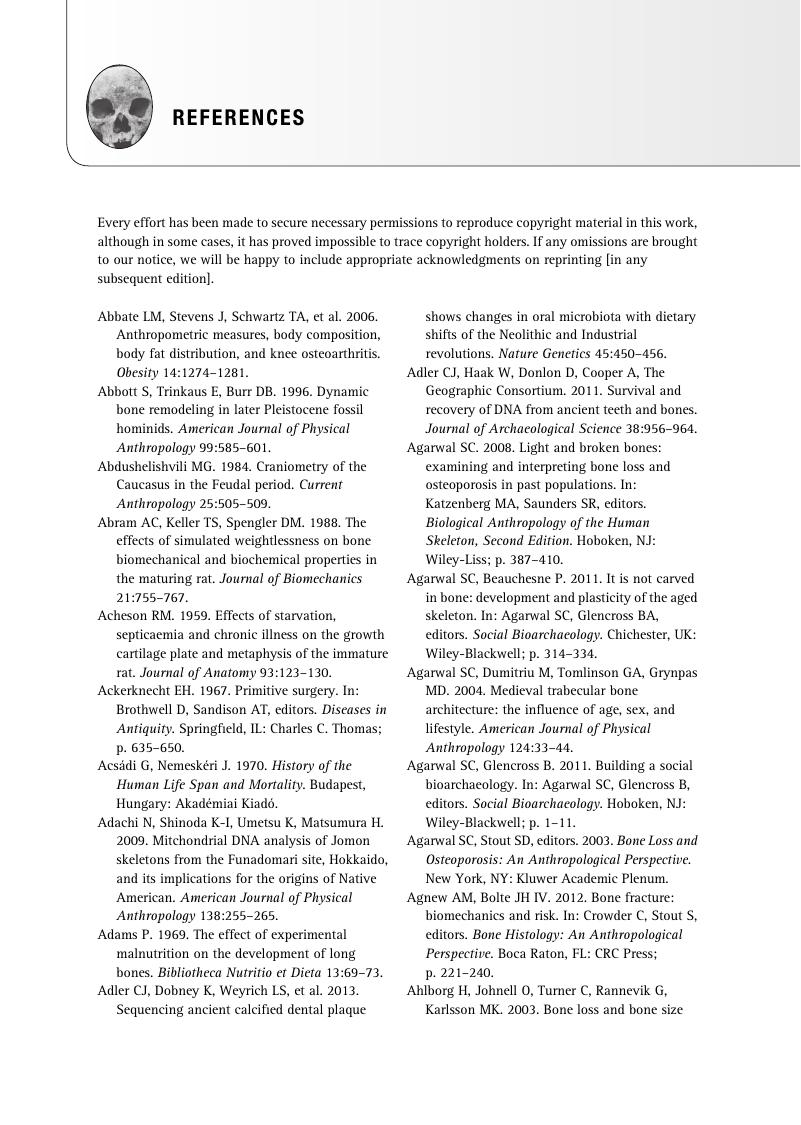Book contents
- Frontmatter
- Dedication
- Contents
- Preface to the Second Edition
- Preface to the First Edition
- 1 Introduction
- 2 Stress and deprivation during growth and development and adulthood
- 3 Exposure to infectious pathogens
- 4 Injury and violence
- 5 Activity patterns: 1. Articular degenerative conditions and musculoskeletal modifications
- 6 Activity patterns: 2. Structural adaptation
- 7 Masticatory and nonmasticatory functions: craniofacial adaptation to mechanical loading
- 8 Isotopic and elemental signatures of diet, nutrition, and life history
- 9 Biological distance and historical dimensions of skeletal variation
- 10 Bioarchaeological paleodemography: interpreting age-at-death structures
- 11 Bioarchaeology: skeletons in context
- References
- Index
- Plate section
- References
References
Published online by Cambridge University Press: 05 April 2015
- Frontmatter
- Dedication
- Contents
- Preface to the Second Edition
- Preface to the First Edition
- 1 Introduction
- 2 Stress and deprivation during growth and development and adulthood
- 3 Exposure to infectious pathogens
- 4 Injury and violence
- 5 Activity patterns: 1. Articular degenerative conditions and musculoskeletal modifications
- 6 Activity patterns: 2. Structural adaptation
- 7 Masticatory and nonmasticatory functions: craniofacial adaptation to mechanical loading
- 8 Isotopic and elemental signatures of diet, nutrition, and life history
- 9 Biological distance and historical dimensions of skeletal variation
- 10 Bioarchaeological paleodemography: interpreting age-at-death structures
- 11 Bioarchaeology: skeletons in context
- References
- Index
- Plate section
- References
Summary

- Type
- Chapter
- Information
- BioarchaeologyInterpreting Behavior from the Human Skeleton, pp. 433 - 592Publisher: Cambridge University PressPrint publication year: 2015



